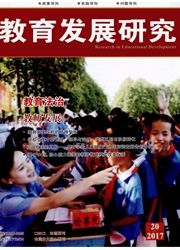

 中文摘要:
中文摘要:
目前,农村人口空心化趋势明显,农业劳动力老龄化、妇女化现象不断扩展,新型职业农民正走向结构性短缺,“农民荒”成为制约现代农业发展和美丽乡村建设的重要因素。在统筹城乡发展中,基于新生代农民职业教育培训的发展态势,本文从实施原则、适用条件、难点阻力和配合机制等方面对新生代农民职业教育培训学分制银行、城乡统筹、校企深度合作、区域协作等四种典型模式进行了比较分析,并提出推进新生代农民职业教育培训实施的现实路径。
 英文摘要:
英文摘要:
In the near decades, the overall population in rural region has fallen significantly. Meanwhile, agricultural population has been aging and the proportion of male in agricultural population has been decreasing. Putting it in another way, agriculture has been facing the structural shortage of professional farmers, which has become the key factor that constrains the development of modern agriculture and the construction of beautiful countryside. Under the background of the balanced development of urban and rural regions and based on the development trend of vocational education for the new generation of farmers, the current paper systematically compared the four typical models of vocational education for the new generation of farmers from their implementation principles, application conditions, difficulties and cooperation systems. These four models are the model of learning credits bank, the model of overall organization of education in urban and rural area, the model of comprehensive cooperation of school and industry, and the model of regional cooperation. Suggestions for promoting the implementation of vocational education for the new generation of farmers were proposed in the last section of this article.
 同期刊论文项目
同期刊论文项目
 同项目期刊论文
同项目期刊论文
 期刊信息
期刊信息
